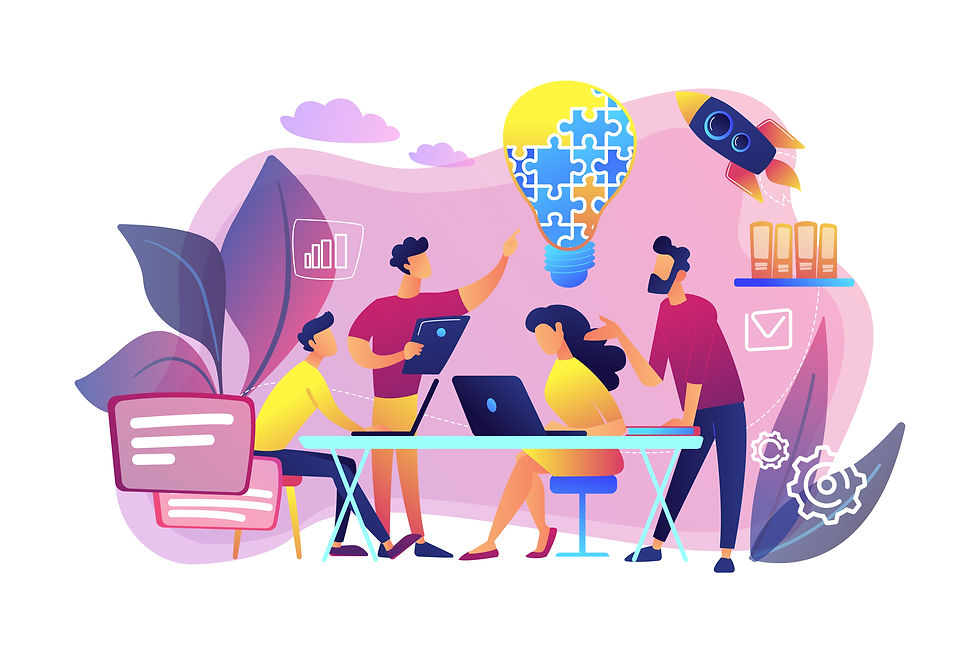Read.Watch.Listen. Segregation Using Highways
- SE3 Racial Equity Task Group
- Mar 22, 2021
- 3 min read
March 2021 Issue
A monthly forum to share diversity, equity, and inclusion resources.
Welcome to the next installment of Read.Watch.Listen: a monthly forum hosted by the NCSEA SE3 Committee to share and promote conversations on diversity, equity and inclusion within the structural engineering profession. Each month, we will curate a series of articles, audio-visual and digital media to facilitate self-education in matters that affect our professional practice as structural engineers. Whether you choose to read, watch, or listen (or all three!), we hope you will join us in this important conversation.

Most of us living in the United States depend on the regular use of highways. The creation of our intricate infrastructure system shaped a new way of life for many, leading to the formation of suburbs and densification of cities. However, the construction of these roadways also played an integral role in the segregation of communities and amplified systemic racism in the US. The resources below explore the development of interstate highways, particularly in cities, and how they disproportionately interrupt minority communities.
Our infrastructure is in need of improvement and rehabilitation as summarized in the recent publication of ASCE’s annual Infrastructure Report Card. As engineers, we are directly tied to the safety and efficacy of our nation’s transportation systems. In maintaining our country’s infrastructure, it is important to understand the greater societal implications of this work so we can help to bring about positive, lasting change.
Missed the previous issue? Check out the NCSEA SE3 Committee News and Publication page. Share your thoughts and/or recommended resources for the next issue at ncsea@ncsea.com.
How Segregation Caused Your Traffic Jam - NY Times Magazine (1619 Project)
In this installment of the 1619 Project, Kevin M. Kruse demonstrates the historical preference for interstates to be built through “blighted” communities while also discussing the challenges of linking modern cities and suburbs. The 1619 Project was created by The New York Times Magazine as an initiative to spotlight the consequences of slavery and contributions of Black Americans in our nation’s history. Kruse is an author and professor of history at Princeton University.
How Highways Wrecked American Cities - Vox
This video clip from Vox illustrates how interstate highways were engineered to run through the heart of major cities. It also emphasizes how wealthy white neighborhoods were able to keep the interstates out of their neighborhoods through racial politics disguised as “urban renewal”.
Transportation Secretary Anthony Foxx on the Legacy of the U.S. Highway System - The Donna Rehm Show
This episode of the Donna Rehm Show is a discussion on the unanticipated consequences of the US highway system which was intentionally built to separate and segregate the population. The second half of the discussion includes a call-in segment with audience members that demonstrates these issues are still prevalent today. Guest speakers include Anthony Foxx, former US Secretary of Transportation; Richard Rothstein, research associate with the Economic Policy Institute; Sherrilyn Ifill, president and director-counsel of the NAACP Legal Defense and Education Fund; and Robert Puentes, senior fellow of the Metropolitan Policy Program and the Brookings Institution.
Questions to Ask Yourself While You Read.Watch.Listen
Do you see evidence of segregation caused by infrastructure and developments in your community?
Much of the US’s current infrastructure requires updates. How can we be thoughtful about the repair, replacement and/or upgrades of these systems based on their impact to local communities?
How can we incorporate new technologies (e.g. ride sharing, self-driving vehicles) to right the wrongs of the past with regards to infrastructure planning?
As a structural engineer and a private citizen, what are some ways that you can get involved to help your local community with infrastructure planning?
This article was originally published in the March 2021 issue of NCSEA's Structural Connection newsletter. For more information, check out NCSEA's DEI Resources.








Comments